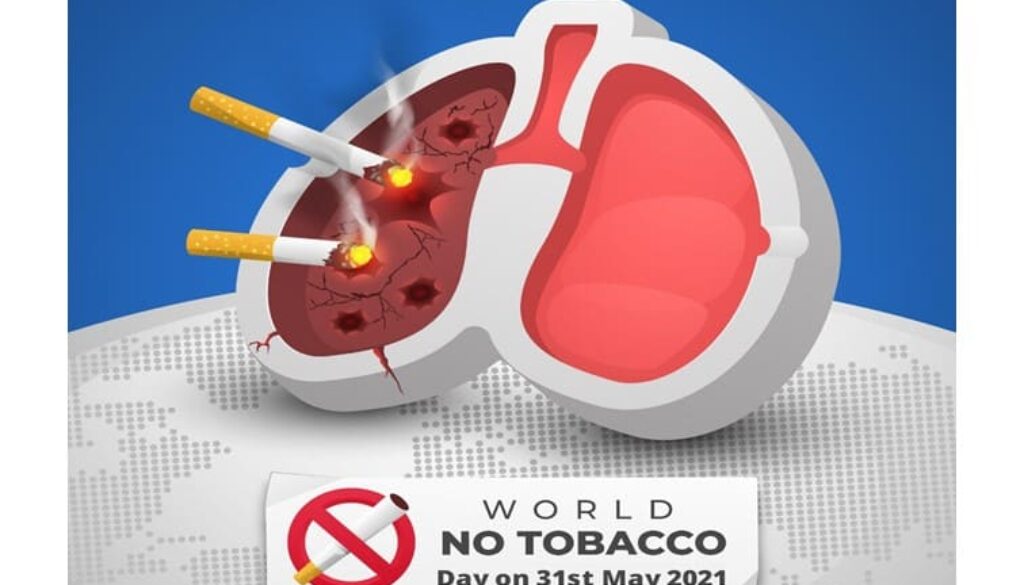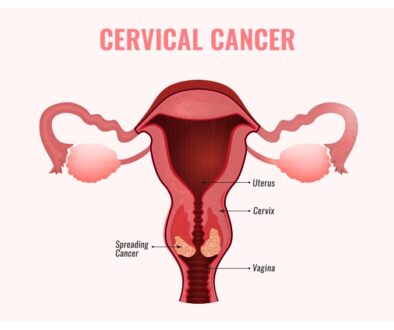World No Tobacco Day – Stop Smoking Today To Live Longer
31ST May is designated as World No Tobacco Day (WNTD) every year. The World Health Organization’s initiative highlights the ill effects of tobacco and encourages tobacco users to have at least one day off or 24 hours of abstinence from tobacco usage in any form.
The member states of the World Health Organization came up with the WNTD, but since its inception, the day remained most controversial, with even the strong pro-tobacco lobby heightening their efforts to promote the usage of tobacco around that date using various direct and surrogate methods.
WNTD is represented beautifully by a clean ashtray with fresh flowers.
WHO and the WNTD has several initiatives which are a significant landmark in the fight against tobacco and tobacco-related diseases. In 1998, WHO adopted the tobacco-free initiative framework and the convention on tobacco control was adopted in 2003 by various countries to implement policies directed towards stopping the use of tobacco.
In 2008, Tobacco-Free Youth started targeted advertisements towards youth; and in 2016, WHO called for plain packaging of tobacco products. Though these are some major landmarks, challenges remain, and this year in 2021, the theme is “Quit Tobacco to be a Winner” The focus is on the negative impact that tobacco has on people’s health, and how quitting tobacco would help tackle various health issues.
Tobacco affects in several ways. Both the smoking and the non-smoking versions of tobacco consumption including chewing, zardas, and using tobacco as an admixture of various chewable – is dangerous in their own way. Smoking tops the list since it is deleterious not only to smokers but also to those around them. Not only does it cause harm, but also physical and psychological dependency. Youth and children are trapped and the overall effect is catastrophic. The smokers’ victims are poor women in the house too who are affected by passive smoking.
Smoking causes effects on several organs in the body in a primary as well as a secondary manner. Primarily affected are the lungs causing chronic obstructive pulmonary disease, pneumonia, asthma and lung cancer. It affects the heart causing heart disease and heart failure, and the vascular system causing gangrene and non-healing ulcers. Smoking causes cancers of various organs such as the lungs, larynx, mouth, bladder and pancreas. It causes high blood pressure and brain stokes. Smoking causes abortion, miscarriages and premature/ low birth weight babies in women and erectile dysfunction in men. smoking is identified as a cause of several health issues in almost 85% of cases. Smoking is the most common cause of preventable deaths worldwide (5 million deaths per year). Male and female smokers lower 12.2 to 14.5 years of their lives by smoking. Each cigarette reduces life shorter by 11 minutes.
Cancer and smoking – a number of cancers are caused primarily by smoking; including the cancers of the lungs, kidney, larynx, head and neck, bladder, oesophagus, stomach and pancreas. There is a small increase in blood cancers, liver, colorectal gall bladder and possibly breast cancer. Tobacco causes harm to the body in several ways with both known and unknown mechanisms. For a smoker, the harm is caused not just by tobacco, but also by other substances such as the burning of paper, tar and other ingredients. Even the dangers of tobacco are amplified due to the addition of substances such as lime as in Khaini. These substances cause depletion of antioxidants, causing promotion of tumour forming genes and suppression of tumour suppression genes. Tobacco increases the level of unhealthy cholesterol in the blood, making blood vessels less flexible and causing injury to blood vessels making them more prone to clotting. Smoking causes direct damage to the kidneys. The risk of oral cancer is the most prominent. India can almost be called the capital of oral cancers in the world due to the high incidence of oral cancers due to chewing tobacco and smoking beedis. There are long term effects of smoking on memory, and behaviour. Alzheimer’s and nervousness are common among smokers.
The Covid pandemic has laid special emphasis on lung health and tobacco, and two of the main complications of covid have been increased due to the use of tobacco. One is the deterioration of the status of lung health. As lungs are most commonly affected in Covid, it goes without saying that smokers are most vulnerable to severe Covid infections.
And the other risk factor is increased tendencies for blood clotting, and this can be increased due to the effect of smoking too, and thus smokers are known to have a far severe form of Covid and more disastrous consequences and sequelae.
On the other hand, the benefits of quitting are almost instant, with the heart rate and blood pressure drop seen within 20 minutes; the toxic carbon monoxide levels dropping to normal within 12 hours, and the lung function and circulation improvement seen anywhere between 2 weeks to 3 months. By around 9 months to 1 year, the lung function improves substantially. Therefore, quitting tobacco has far-reaching benefits.
The use of tobacco in India is uniquely divided into 2 segments. In the affluent class, it is mostly in the form of smoking whereas in the not so affluent class it is in the form of smokeless tobacco. This is, however, not to discount the harmful effect of secondary smoking and even tertiary smoking, where the effects of smoking persist long after the smokers have left the scene.
The Global Adult Tobacco Survey India study (GATS 2010) has revealed startling results. According to the study, India has 270 million users, with 163 million use smokeless tobacco, 68.4 million are smokers and 42.3 million use both smokeless tobacco and also smoke. The prevalence in men is 48% and the prevalence in women is 20%. India has more smoking women 12.1 million than every other country in the world except the United States. Due to the drive against smoking, smoking has reduced in men; however, the incidence remains the same amongst women.
A majority of the smoking among women is smokeless tobacco. While women in the urban areas use smoking primarily to make a style statement, the women in the rural areas use smoking as a means to suppress hunger and pain. India seems to be mimicking the scenario in the USA about 20 years ago and hence is a danger of facing increased smoking-related health issues in women. The total cost of disease with the tobacco-related disease in the age group of 35- 69 years is 1.05 lakh crores or 1.1% of GDP and 12% more than the state and central government expenditure on healthcare put together. Women users of tobacco are mainly in the North-Eastern states.
What is the impact of all this? Women face the brunt of the habit- either if they consume in the family or anyone else in the family does. Women are particularly vulnerable to tobacco-related diseases, though their prognosis remains better than men. Women keep their own health as a low priority, and they often lack the will, confidence or boldness to address this health issue directly. Women should feel empowered to end the habit of tobacco. They should say no to the use of tobacco by family members too. They should not resort to these habits to suppress hunger as in rural areas, and any emancipated woman should not use the prop of a cigarette to make a social statement. It is a regressive step. A woman is the centre stage of the family. She should strongly stand for any decision she takes for the family. She should take a bold stand against tobacco and influence her husband and siblings to give up tobacco. She should influence and train her children from an early age to stay away from tobacco.
Indian women are unique in the way that they can send satellites to Mars while wearing a traditional sari to work. The traditional strengths and resilience and modern outlook should put women at the centre stage of our efforts and fight against this major scourge. If the women’s mind is set, no amount of counter-propaganda can deviate her from her path. It is absolutely essential that the policymakers should target her and use her if they have to win this war




